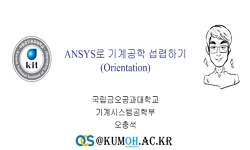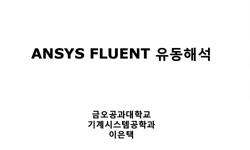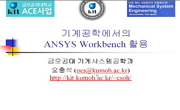Magnetorheological (MR) damper is one of the most advanced applications of semi active damper in controlling vibration. Due to itscontinuous controllability in both on and off state its practice is increasing day by day in the vehicle suspension syste...
http://chineseinput.net/에서 pinyin(병음)방식으로 중국어를 변환할 수 있습니다.
변환된 중국어를 복사하여 사용하시면 됩니다.
- 中文 을 입력하시려면 zhongwen을 입력하시고 space를누르시면됩니다.
- 北京 을 입력하시려면 beijing을 입력하시고 space를 누르시면 됩니다.



Optimal design of Magneto-Rheological damper comparing different configurations by finite element analysis
한글로보기https://www.riss.kr/link?id=A103790998
-
저자
Mohammad Meftahul Ferdaus (International Islamic University Malaysia) ; Muhammad Mahbubur Rashid (International Islamic University Malaysia) ; Muhammad Hasibul Hasan (International Islamic University Malaysia) ; Mohammed Ataur Rahman (International Islamic University Malaysia)

- 발행기관
- 학술지명
- 권호사항
-
발행연도
2014
-
작성언어
-
- 주제어
-
등재정보
KCI등재,SCIE,SCOPUS
-
자료형태
학술저널
-
수록면
3667-3677(11쪽)
-
KCI 피인용횟수
20
- 제공처
-
0
상세조회 -
0
다운로드
부가정보
다국어 초록 (Multilingual Abstract)
Magnetorheological (MR) damper is one of the most advanced applications of semi active damper in controlling vibration. Due to itscontinuous controllability in both on and off state its practice is increasing day by day in the vehicle suspension system. MR damper’sdamping force can be controlled by changing the viscosity of its internal magnetorheological fluids (MRF). But still there are some problemswith this damper such as MR fluid’s sedimentation, optimal design configuration considering all components of the damper. In thispaper both 2-D Axisymmetric and 3-D model of MR Damper is built and finite element analysis is done for design optimization. Differentconfigurations of MR damper piston, MR fluid gap, air gap and Dampers housing are simulated for comparing the Dampers performancevariation. From the analytical results it is observed that among different configurations single coil MR damper with linear plastic airgap, top and bottom chamfered piston end and medium MR fluid gap shows better performance than other configurations by maintainingthe same input current and piston velocity. Further an experimental analysis is performed by using RD-8041-1 MR Damper. These resultsare compared with the optimized MR Damper’s simulation results, which are clearly validating the simulated results.
참고문헌 (Reference)
1 Yamanaka, Shinya, "Two-step surface modification of iron particles for magnetorheological fluid" 42 (42): 29-31, 2013
2 Seiyed Hamid Zareh, "Semi-active vibration control of an eleven degrees of freedom suspension system using neuro inverse model of magnetorheological dampers" 대한기계학회 26 (26): 2459-2467, 2012
3 Emanuele Guglielmino, "Semi-active suspension control: improved vehicle ride and road friendliness" 57 (57): 155-155, 2009
4 Guglielmino, Emanuele, "Semi-active suspension control" Springer 2008
5 Gharapurkar, Ajinkya A, "Semi-active control of aircraft landing gear system using h-infinity control approach" IEEE 679-686, 2013
6 El-Khoury, Omar, "Recent advances on vibration control of structures under dynamic loading" 20 (20): 353-360, 2013
7 Chitragari, Gautham, "Prosthetic options available for the diabetic lower limb amputee" 31 (31): 173-185, 2014
8 B. Kasemi, "Optimizing dynamic range of Magnetorheological fluid dampers: Modeling and simulation" 2011
9 Nguyen, QH, "Optimal design of magnetorheological fluid-based dampers for frontloaded washing machines" 228 (228): 294-306, 2014
10 Nguyen, Quoc-Hung, "Optimal design of MR shock absorber and application to vehicle suspension" 18 (18): 035012-, 2009
1 Yamanaka, Shinya, "Two-step surface modification of iron particles for magnetorheological fluid" 42 (42): 29-31, 2013
2 Seiyed Hamid Zareh, "Semi-active vibration control of an eleven degrees of freedom suspension system using neuro inverse model of magnetorheological dampers" 대한기계학회 26 (26): 2459-2467, 2012
3 Emanuele Guglielmino, "Semi-active suspension control: improved vehicle ride and road friendliness" 57 (57): 155-155, 2009
4 Guglielmino, Emanuele, "Semi-active suspension control" Springer 2008
5 Gharapurkar, Ajinkya A, "Semi-active control of aircraft landing gear system using h-infinity control approach" IEEE 679-686, 2013
6 El-Khoury, Omar, "Recent advances on vibration control of structures under dynamic loading" 20 (20): 353-360, 2013
7 Chitragari, Gautham, "Prosthetic options available for the diabetic lower limb amputee" 31 (31): 173-185, 2014
8 B. Kasemi, "Optimizing dynamic range of Magnetorheological fluid dampers: Modeling and simulation" 2011
9 Nguyen, QH, "Optimal design of magnetorheological fluid-based dampers for frontloaded washing machines" 228 (228): 294-306, 2014
10 Nguyen, Quoc-Hung, "Optimal design of MR shock absorber and application to vehicle suspension" 18 (18): 035012-, 2009
11 Singh, Harinder J, "Optimal control of gun recoil in direct fire using magnetorheological absorbers" 23 (23): 055009-, 2014
12 Mohammad Meftahul Ferdaus, "Novel design of a self powered and self sensing magnetorheological damper" 53 (53): 012048-, 2013
13 Atabak Sarrafan, "Neuro-fuzzy control strategy for an offshore steel jacket platform subjected to wave-induced forces using magnetorheological damper" 대한기계학회 26 (26): 1179-1196, 2012
14 Alghamdi, Ali A, "Modern Mechanical Engineering" Springer 43-62, 2014
15 안경관, "Modeling of a magneto-rheological (MR) fluid damper using a self tuning fuzzy mechanism" 대한기계학회 23 (23): 1485-1499, 2009
16 Powell, Louise A, "Magnetorheological fluid composites synthesized for helicopter landing gear applications" 24 (24): 1043-1048, 2013
17 G. Yang, "Large-scale MR fluid dampers: modeling and dynamic performance considerations" 24 (24): 309-323, 2002
18 S. A. Khan, "Investigation on the performance of MR damper with various piston configurations" 2 : 2012
19 Q H Nguyen, "Geometric optimal design of MR damper considering damping force, Control Energy and Time Constant" IOP Publishing 149 (149): 012076-, 2009
20 Z. Chao, "Finite element analysis of a magnetorheological fluid damper" 3145-3149,
21 Walid H. El-Aouar, "Finite element analysis based modeling of magneto rheological dampers" Virginia Polytechnic Institute and State University 2002
22 S. M. H. B. Kasemi, "Experimental investigation of magnetorheological fluid damper for semi-active vibration control" International Islamic University 2012
23 G. T. Ngatu, "Dimorphic magnetorheological fluids: exploiting partial substitution of microspheres by nanowires" 17 (17): 045022-, 2008
24 Nandy, Anup, "Contemporary Computing" Springer 452-462, 2012
25 Isoda, Haruo, "Comparison of hemodynamics of intracranial aneurysms between mr fluid dynamics using 3d cine phase-contrast MRI and MR-based computational fluid dynamics" 52 (52): 913-920, 2010
26 Cha, Young-Jin, "Comparative studies of semiactive control strategies for MR dampers: Pure simulation and real-time hybrid tests" 139 (139): 1237-1248, 2013
27 Atabay, Elmas, "Application of a magnetorheological damper modeled using the current-dependent bouc-wen model for shimmy suppression in a torsional nose landing gear with and without freeplay" 2013
28 Bitaraf, Maryam, "Active and semi-active adaptive control for undamaged and damaged building structures under seismic load" 27 (27): 48-64, 2012
29 Nandy, Anup, "A study on damping profile for prosthetic knee" 2012
30 윤영원, "A study of the control of the blank holding force using an MR damper in a drawing press" 대한기계학회 24 (24): 2281-2288, 2010
31 H. H. Zhang, "A magnetic design method of MR fluid dampers and FEM analysis on magnetic saturation" 17 (17): 813-818, 2006
32 N Yasrebi, "A Ghazavi and M M Mashhadi, Magnetorhelogical fluid dampers modeling: numerical and experimental" 2006
동일학술지(권/호) 다른 논문
-
- 대한기계학회
- 권현웅
- 2014
- KCI등재,SCIE,SCOPUS
-
- 대한기계학회
- Brian J. Tuazon
- 2014
- KCI등재,SCIE,SCOPUS
-
- 대한기계학회
- 방종근
- 2014
- KCI등재,SCIE,SCOPUS
-
Optimization of cryogenic cooled EDM process parameters using grey relational analysis
- 대한기계학회
- Vinoth Kumar. S
- 2014
- KCI등재,SCIE,SCOPUS
분석정보
인용정보 인용지수 설명보기
학술지 이력
| 연월일 | 이력구분 | 이력상세 | 등재구분 |
|---|---|---|---|
| 2023 | 평가예정 | 해외DB학술지평가 신청대상 (해외등재 학술지 평가) | |
| 2020-01-01 | 평가 | 등재학술지 유지 (해외등재 학술지 평가) |  |
| 2012-11-05 | 학술지명변경 | 한글명 : 대한기계학회 영문 논문집 -> Journal of Mechanical Science and Technology |  |
| 2010-01-01 | 평가 | 등재학술지 유지 (등재유지) |  |
| 2008-01-01 | 평가 | 등재학술지 유지 (등재유지) |  |
| 2006-01-19 | 학술지명변경 | 한글명 : KSME International Journal -> 대한기계학회 영문 논문집외국어명 : KSME International Journal -> Journal of Mechanical Science and Technology |  |
| 2006-01-01 | 평가 | 등재학술지 유지 (등재유지) |  |
| 2004-01-01 | 평가 | 등재학술지 유지 (등재유지) |  |
| 2001-01-01 | 평가 | 등재학술지 선정 (등재후보2차) |  |
| 1998-07-01 | 평가 | 등재후보학술지 선정 (신규평가) |  |
학술지 인용정보
| 기준연도 | WOS-KCI 통합IF(2년) | KCIF(2년) | KCIF(3년) |
|---|---|---|---|
| 2016 | 1.04 | 0.51 | 0.84 |
| KCIF(4년) | KCIF(5년) | 중심성지수(3년) | 즉시성지수 |
| 0.74 | 0.66 | 0.369 | 0.12 |




 KCI
KCI






